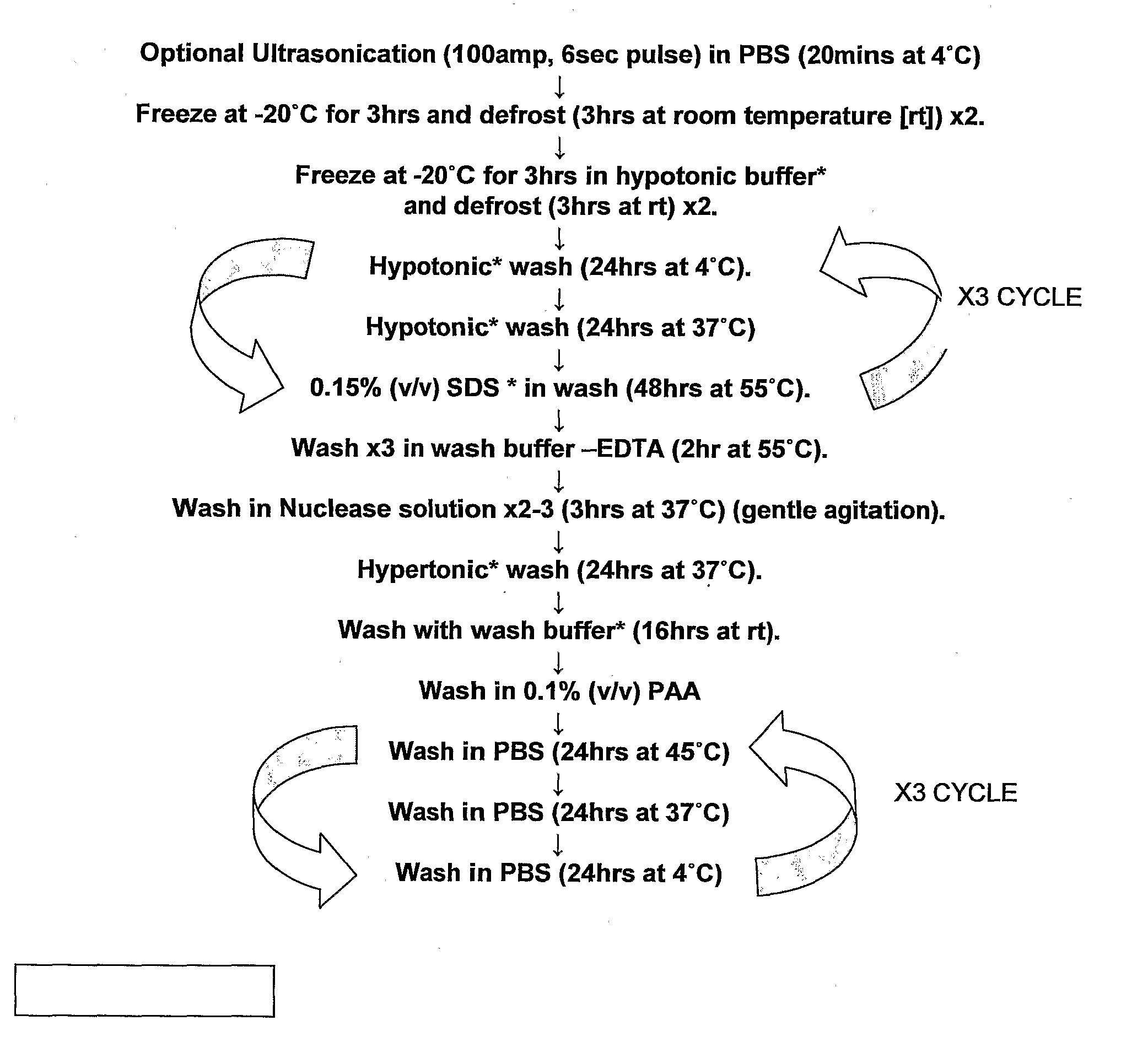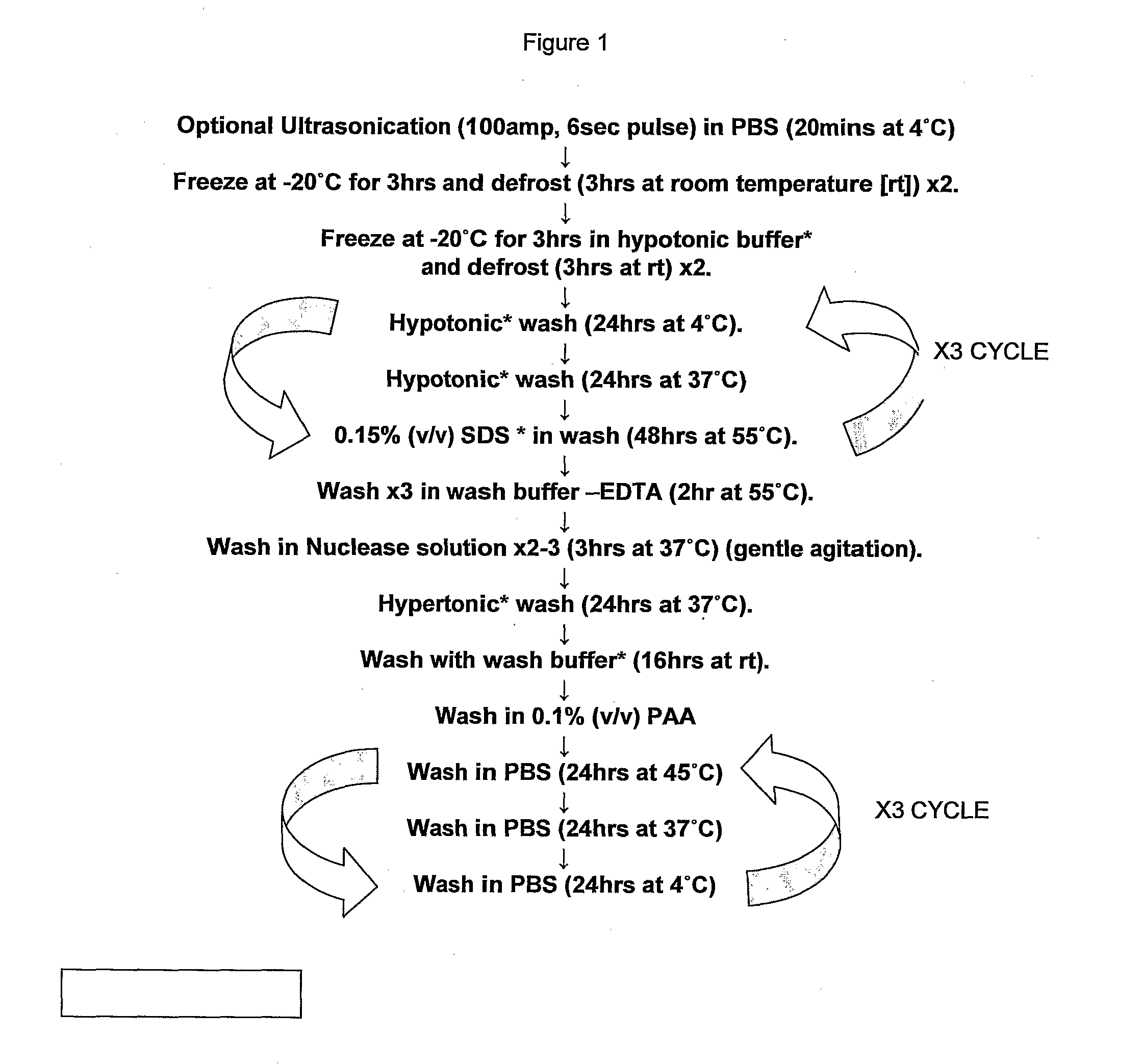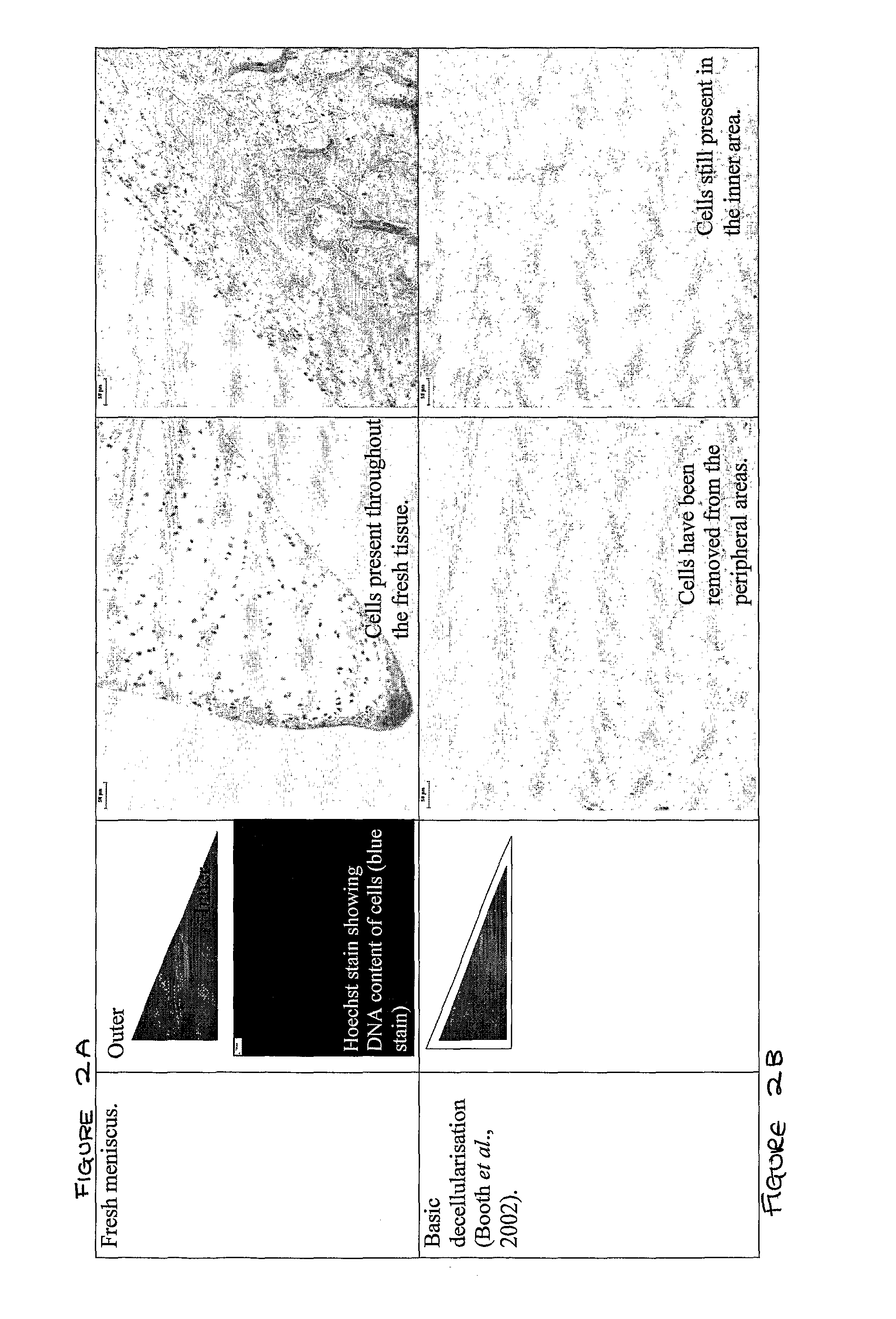Preparation of tissue for meniscal implantation
a tissue and meniscus technology, applied in the field of tissue preparation for meniscal implantation, can solve the problems of severe damage or extensive tear of the meniscus, difficulty in preparing an immunologically inert or decellularised tissue for transplantation, swelling and/or loss of knee joint function,
- Summary
- Abstract
- Description
- Claims
- Application Information
AI Technical Summary
Benefits of technology
Problems solved by technology
Method used
Image
Examples
example 1
[0085]With reference to FIG. 1 there is shown a typical flow chart of one embodiment of the method of the present invention. With regard to the protocol of FIG. 1 the order of ultrasonication and freeze / thawing may be reversed, however as will be demonstrated hereinafter the steps of ultrasonication, freeze / thawing and treatment with PAA are essential in order to effect total decellularisation of meniscal tissue.
example 2
[0086]With reference to FIG. 2A-G, there is shown a schematic representation of the meniscus as a right-angled triangle to approximate the overall cross sectional shape of the meniscus and a Hoechst stain showing the DNA content of cells which is an indication of cell density. In addition histology slides are provided to the right. FIGS. 2A-G shows the DNA content and histology of the medial porcine meniscus after decellularisation using various protocols.
[0087]FIG. 2A shows fresh porcine medial meniscus and the presence of cells throughout the tissue with a uniform distribution of DNA content of cells or cell density from the outer to inner regions of the meniscus.
[0088]The protocol followed for decellularisation of porcine medial meniscus in FIG. 2B is described in Booth, C et al “Tissue engineering of cardiac valve prostheses I: Development and histological characterisation of an acellular porcine scaffold”The Journal of Heart Valve Disease 11, pp. 457-462, (2002). This process d...
example 3
[0090]With reference to FIG. 3A there is shown cell distribution within fresh medial porcine meniscus. A cross-sectional area of the meniscus approximates to a right-angled triangle (see FIGS. 2A-G) and shows that the areas problematic to decellularisation include the outer and central areas of the meniscus, especially around microvascularisation deep within the centrally located tissue. As shown in Example 2A-E the areas which could be decellularised using an incomplete method according to the present invention were the superior and inferior peripheral meniscus and the inner meniscus. With reference to FIG. 3B there is shown a comparable section of a porcine medial meniscus decellularised according to the method of the present invention wherein the meniscus, including the problematic outer and central areas, is completely devoid of cells, in other words the meniscus is completely decellularised and provides a tissue that is suitable for transplantation into a host.
PUM
 Login to View More
Login to View More Abstract
Description
Claims
Application Information
 Login to View More
Login to View More - R&D
- Intellectual Property
- Life Sciences
- Materials
- Tech Scout
- Unparalleled Data Quality
- Higher Quality Content
- 60% Fewer Hallucinations
Browse by: Latest US Patents, China's latest patents, Technical Efficacy Thesaurus, Application Domain, Technology Topic, Popular Technical Reports.
© 2025 PatSnap. All rights reserved.Legal|Privacy policy|Modern Slavery Act Transparency Statement|Sitemap|About US| Contact US: help@patsnap.com



